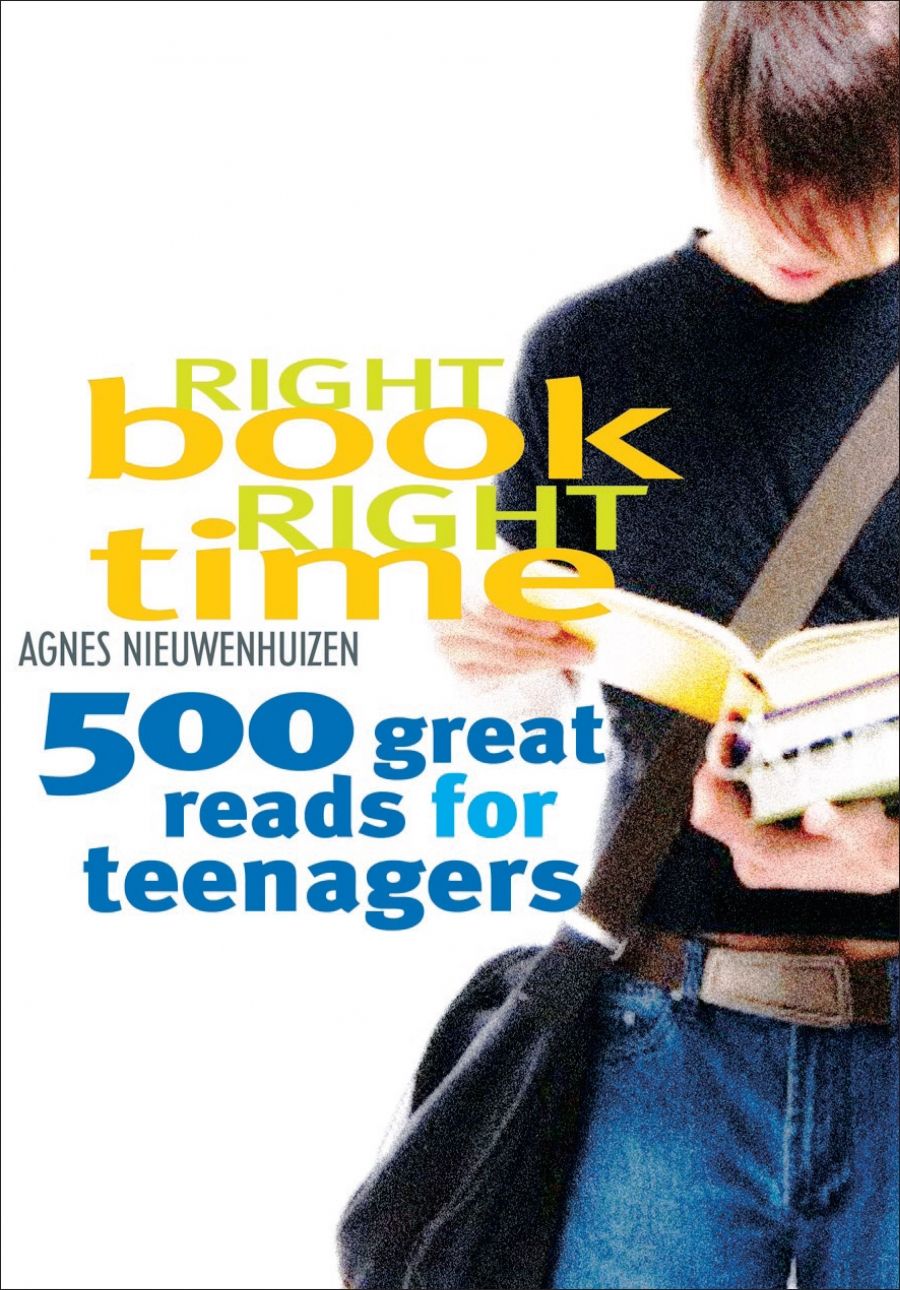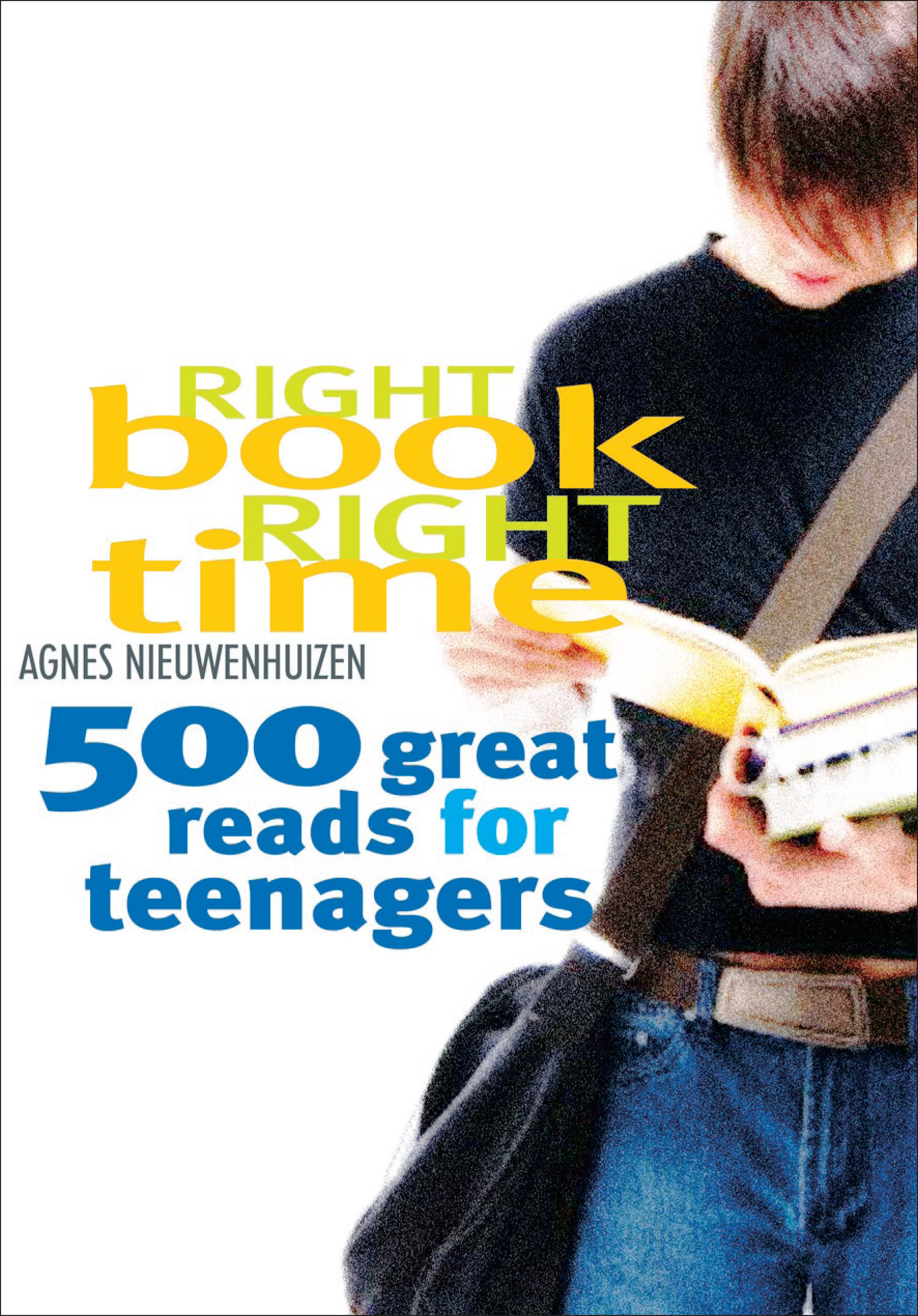
- Free Article: No
- Contents Category: Non-fiction
- Review Article: Yes
- Article Title: Reading trail
- Online Only: No
- Custom Highlight Text:
This is Agnes Nieuwenhuizen’s third guide to teenage reading: Good Books for Teenagers (1992) was followed by More Good Books for Teenagers (1995). Thankfully, this latest instalment is not Even More Good Books for Teenagers, but the much less prescriptively titled Right Book, Right Time: 500 Great Reads for Teenagers. Whereas ‘good’ collocated all too easily with ‘a good breakfast’ – as in bran – ‘great’ communicates a certain quality of excellence or a joyful exclamation. Either way, we immediately understand that when there is chemistry between young people and books something exciting, of both literary and personal significance, is going on.
- Book 1 Title: Right Book, Right Time
- Book 1 Subtitle: 500 Great reads for teenangers
- Book 1 Biblio: Allen & Unwin, $35 pb, 368 pp
- Book 1 Cover Small (400 x 600):

- Book 1 Cover (800 x 1200):

Right Book, Right Time contains more than two hundred detailed descriptions of novels and non-fiction works, and several hundred shorter book references. These are organised into twelve sections, punctuated by various break-out lists and six guest-authored mini-essays. The sectional breaks establish a thematic map of the young adult genre. Nieuwenhuizen has eschewed traditional categories and replaced them with broad but accessible banner headings such as ‘Life, Love and Loss’, ‘Not Such Ordinary Lives’, ‘Outside the Square’, ‘Extreme and Edgy’ and ‘Been and Gone’. This approach offers teenage readers a clear framework for choice, while also bringing unexpected titles together. Nieuwenhuizen describes her compendium as a ‘reading trail’, offering the reader ‘stepping stones, links, tangents, short-cuts and detours’. With many years service as a teacher and, until her recent retirement, as manager of the Centre for Youth Literature at the State Library of Victoria, it is clear that her passionate commitment to her subject and audience is undiminished.
There are many delights in reading a book about books. One of them is the pleasure of the cognoscenti, the measuring of your own reading experiences against another’s. Another is a personal stocktaking, in which you lift your eyes from a book and notice that seeming ‘tangents’ and ‘stepping stones’ form a recognisable or well-documented path. Seeing such patterns in our reading allows us to reflect upon our emergent selves. For those with a professional interest in the discipline, a book such as Right Book, Right Time can delimit theoretical horizons or offer an improved framework of understanding. Reading it, I was struck by the extent of the interpenetration between the overtly adult and young adult at one end, and picture books and young adult at the other. Like the teenage years themselves, these margins have become increasingly permeable at the level of subject matter and form. I found Nieuwenhuizen’s reclamation of adult works of literature for a teenage audience particularly admirable. Putting Thomas Mann’s Death in Venice or Shakespeare’s Merchant of Venice in a volume like this reminds us that young adults straddle worlds and embody a wider range of reading preferences than any marketing category can sustain. The drawcard of such catalogues, however, is the way that they can be used to increase expectancy and hope. I have several pages full of new authors with whom I can’t wait to start a late-night conversation.
All this is in Right Book, Right Time’s favour. There is, however, a problem with an uneven, often clunky, quality to the book descriptions and an insistently reductive mode of analysis. In general, for most of her précis Nieuwenhuizen examines the story, summarising a novel’s entire narrative arc before breaking off, just when our interest has been piqued, to ask a series of questions. The tone often sounds suspiciously like a cover blurb. ‘Can Val escape the lure of the Nevermore for long enough to figure out what’s poisoning the faeries? Is it Ravus the hideous troll to whom Val is strangely attracted? Or is it one of her street-kid friends?’
More off-putting for this reader, though, is the heavy-handed signing of Important Themes and Contemporary Relevance. Sentences such as ‘[Fever 1793] also has a contemporary resonance, as the fear of epidemics (SARS, AIDS, Bird Flu) is ever-present’ permeate Right Book, Right Time. Their presence removes the delicate negotiations between book and reader, working against the possibility for uncertainty that lies at the heart of the reading enterprise. Such writing about writing sets the wrong example. The motivations we offer for the flight into fiction need to be more complex.
This book will doubtless sell well. It is priced for the institutional end of the market: schools and libraries will buy it for their reference shelves; and perhaps some extremely dedicated – or nervous – parents will see it as a useful resource. In the final analysis, however, reading is about the personal discovery of other worlds. The right to be your own explorer is the thrilling dimension of this. Roadmaps can be dangerous as well as wonderful resources. If Right Book, Right Time takes the teenage reader to new and exotic locales, all the better; if it gives the journey a predictable outcome, what a loss.


Comments powered by CComment